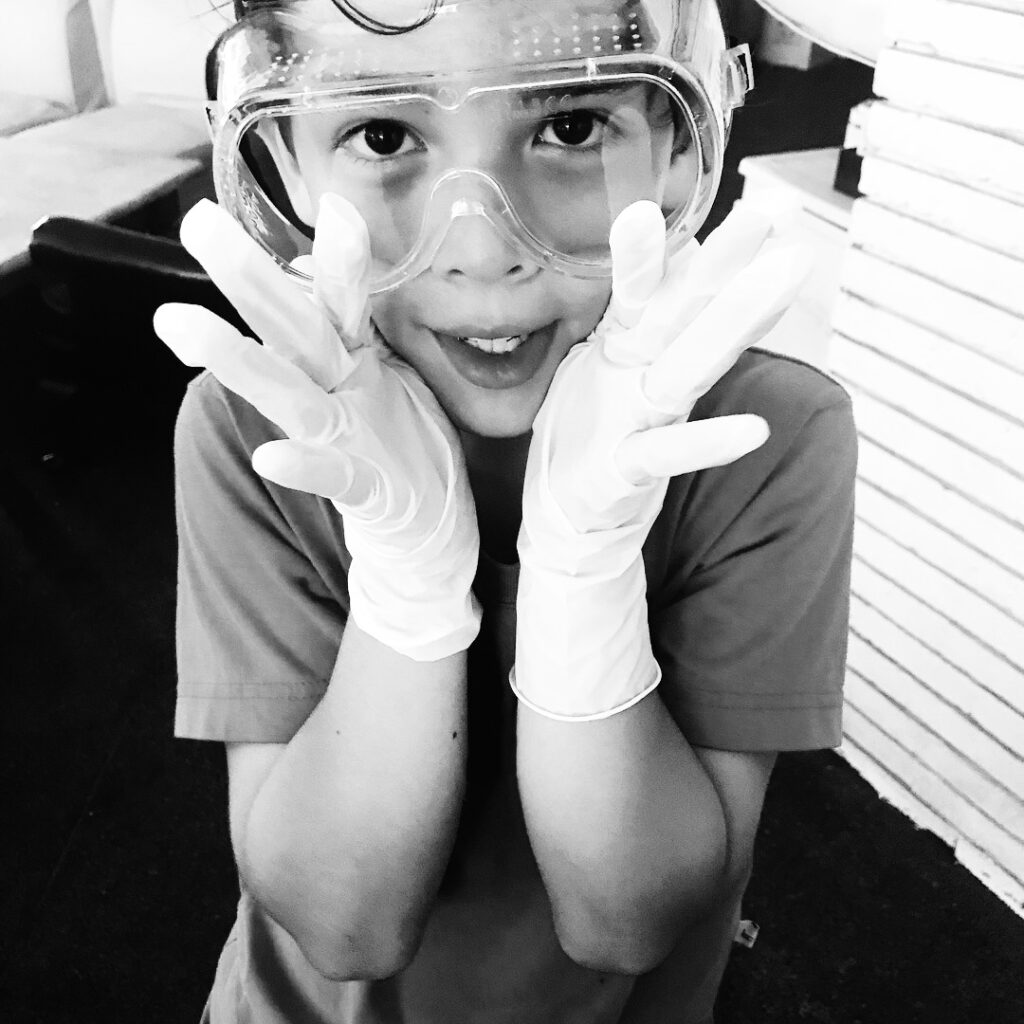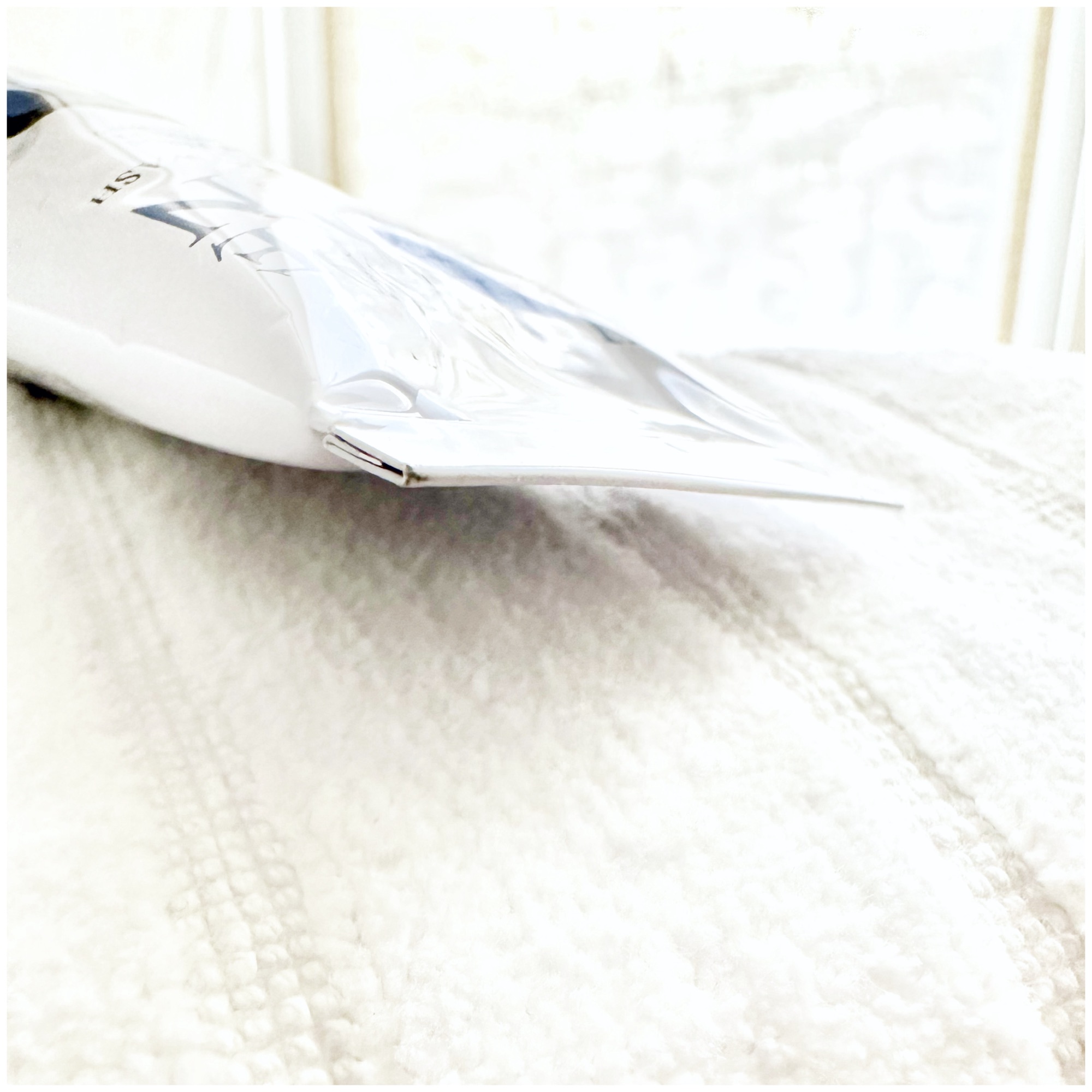Allergen
Lab Safety Gear
You won’t see goggles, masks, face shields, or gloves on a patch test but they do tend to have enough top contact allergens to warrant caution. Important: you could be exposed to strong chemicals or other risks in a lab setting so do not forego the safety equipment.
Some top contact allergens in common lab equipment:
- Rubber (and therefore thiuram and carba mix,), plus possible latex or other elastics in …
- Many rubber items contain benzophenones to prevent degradation from light exposure
- Some scrubs might have dyes or disperse blue
- Formaldehyde and other preservatives
- Glues and colophony or rosin
- Metal parts that may contain nickel
What other skin problems are possible?
If you wear goggles, gloves, or other protective gear for extended periods of time, this can mean your skin being enclosed in an increasingly hot, humid atmosphere with no air circulation. This can increase the risk of a contact allergy or worsen existing ones. And not just to the safety equipment itself: if you’re using soaps or lotions with your allergens, this environment could worsen reactions to those, too.
Microbes find a hot, humid, enclosed environment ideal, too, increasing the risk of fungal (see sweat “acne” below) problems, warts (viral issues), or bacterial infections (be mindful if you’re dealing with a wound or cyst in areas under your safety equipment).
In addition to allergic reactions and irritant contact dermatitis, hyperpigmentations and hypopigmentations, sweat “acne” (Malassezia folliculitis) and other microbial infections can be an issue due to the hot, humid environment created by hours of your skin being enclosed under a heavy rubber apron or gloves, or behind goggles or a mask. Bumps and rashes always come with the risk of post-inflammatory hyperpigmentations.
What can help?
- Get a patch test so you’re not guessing. Safety equipment is very important and should not be optional. You want to be clear about what materials you can use (for example, you might be fine with vinyl or Tactylon® gloves instead of latex — just make sure that the material of your equipment provides appropriate protection for your specific work and environment).
- Make an effort to contact the manufacturer to confirm if the equipment you need to use contains your allergens.
- Disclose your allergies to nickel, rubber, and other positive results from your patch test to your doctor or dentist before any procedure, even before they choose which gloves to use when examining you.
- Try using an organic, light-colored or uncolored natural fabric in between your skin and areas of contact (such as between your hands and gloves, for example).
- Try paperclips or hospital wristbands to hold earlobes behind the head for face masks or goggles (just make sure the mask or googles fit appropriately on your face).
- If you patch tested positive to nickel, there are a growing of blocking solutions that could provide a barrier between you and the material, including Nickel Alert and Nik-L-Block. The latter has a testing solution for nickel, one for cobalt.
- Apply a mineral barrier-protective product like Stay-On-Point! or Armada Baby or Post-Procedure thickly on exposed skin.
- Bathe with allergen-free body wash or soap. Importantly, most VMV Hypoallergenics products also contain coconut-derived monolaurin, a non-allergenic, microbiota-friendly broad-spectrum antimicrobial to help with the wide range of possible infections.
- Before putting on your mask or gloves, try this great technique for sweat and microbial control: spray the area with Essence Skin-Saving Antiperspirant or Essence Stay Fresh-ener (in the USA) then massage Id Monolaurin Gel or Kid Gloves over the skin. They can be reapplied as needed.
- For barrier repair of irritated skin and microbiome balance, massage Know-It-Oil or Oil’s Well liberally all over your face, hands, and other exposed skin before bed.
Subscribe to VMVinSKIN.com and our YouTube channel for more hypoallergenic tips and helpful “skinformation”!
If you have a history of sensitive skin…
…don’t guess! Random trial and error can cause more damage. Ask your dermatologist about a patch test.
To shop our selection of hypoallergenic products, visit vmvhypoallergenics.com. Need help? Ask us in the comments section below, or for more privacy (such as when asking us to customize recommendations for you based on your patch test results) contact us by email, or drop us a private message on Facebook.
For more:
- On the prevalence of skin allergies, see Skin Allergies Are More Common Than Ever.
- For the difference between irritant and allergic reactions, see It’s Complicated: Allergic Versus Irritant Reaction.
- For the difference between food, skin, and other types of reactions: see Skin & Food Allergies Are Not The Same Thing.
- On the differences between hypoallergenic, natural, and organic, check out Is Natural Hypoallergenic? and this video in our YouTube channel.
- To learn about the VH-Rating System and hypoallergenicity: What Is The Validated Hypoallergenic Rating System?
Main References:
Regularly published reports on the most common allergens by the North American Contact Dermatitis Group and European Surveillance System on Contact Allergies (based on over 28,000 patch test results, combined), plus other studies. Remember, we are all individuals — just because an ingredient is not on the most common allergen lists does not mean you cannot be sensitive to it, or that it will not become an allergen. These references, being based on so many patch test results, are a good basis but it is always best to get a patch test yourself.
- DeKoven JG, Silverberg JI, Warshaw EM, Atwater AR, et al. North American Contact Dermatitis Group Patch Test Results: 2017-2018. Dermatitis. 2021 Mar-Apr 01;32(2):111-123.
- DeKoven JG, Warshaw EM, Zug KA, et al. North American Contact Dermatitis Group Patch Test Results: 2015-2016. Dermatitis. 2018 Nov/Dec;29(6):297-309.
- DeKoven JG, Warshaw EM, Belsito DV, et al. North American Contact Dermatitis Group Patch Test Results 2013-2014. Dermatitis. 2017 Jan/Feb;28(1):33-46.
- Warshaw, E.M., Maibach, H.I., Taylor, J.S., et al. North American contact dermatitis group patch test results: 2011-2012. Dermatitis. 2015; 26: 49-59.
- W Uter et al. The European Baseline Series in 10 European Countries, 2005/2006–Results of the European Surveillance System on Contact Allergies (ESSCA). Contact Dermatitis 61 (1), 31-38.7 2009.
- Wetter, DA et al. Results of patch testing to personal care product allergens in a standard series and a supplemental cosmetic series: An analysis of 945 patients from the Mayo Clinic Contact Dermatitis Group, 2000-2007. J Am Acad Dermatol. 2010 Nov;63(5):789-98.
- Warshaw EM, Buonomo M, DeKoven JG, et al. Importance of Supplemental Patch Testing Beyond a Screening Series for Patients With Dermatitis: The North American Contact Dermatitis Group Experience. JAMA Dermatol. 2021 Dec 1;157(12):1456-1465.
- Verallo-Rowell VM. The validated hypoallergenic cosmetics rating system: its 30-year evolution and effect on the prevalence of cosmetic reactions. Dermatitis 2011 Apr; 22(2):80-97.
- Ruby Pawankar et al. World Health Organization. White Book on Allergy 2011-2012 Executive Summary.
- Misery L et al. Sensitive skin in the American population: prevalence, clinical data, and role of the dermatologist. Int J Dermatol. 2011 Aug;50(8):961-7.
- Warshaw EM1, Maibach HI, Taylor JS, Sasseville D, DeKoven JG, Zirwas MJ, Fransway AF, Mathias CG, Zug KA, DeLeo VA, Fowler JF Jr, Marks JG, Pratt MD, Storrs FJ, Belsito DV. North American contact dermatitis group patch test results: 2011-2012.Dermatitis. 2015 Jan-Feb;26(1):49-59.
- Warshaw, E et al. Allergic patch test reactions associated with cosmetics: Retrospective analysis of cross-sectional data from the North American Contact Dermatitis Group, 2001-2004. J AmAcadDermatol 2009;60:23-38.
- Foliaki S et al. Antibiotic use in infancy and symptoms of asthma, rhinoconjunctivitis, and eczema in children 6 and 7 years old: International Study of Asthma and Allergies in Childhood Phase III. J Allergy Clin Immunol. 2009 Nov;124(5):982-9.
- Kei EF et al. Role of the gut microbiota in defining human health. Expert Rev Anti Infect Ther. 2010 Apr; 8(4): 435–454.
- Thavagnanam S et al. A meta-analysis of the association between Caesarean section and childhood asthma. Clin Exp Allergy. 2008;38(4):629–633.
- Marks JG, Belsito DV, DeLeo VA, et al. North American Contact Dermatitis Group patch-test results, 1998 to 2000. Am J Contact Dermat. 2003;14(2):59-62.
- Warshaw EM, Belsito DV, Taylor JS, et al. North American Contact Dermatitis Group patch test results: 2009 to 2010. Dermatitis. 2013;24(2):50-99.
- Verallo-Rowell V. M, Katalbas S.S. & Pangasinan J. P. Natural (Mineral, Vegetable, Coconut, Essential) Oils and Contact Dermatitis. Curr Allergy Asthma Rep 16,51 (2016) . https://doi.org/10.1007/s11882-016-0630-9.
- Park G, Oh DS, Lee MG, Lee CE, Kim YU. 6-Shogaol, an active compound of ginger, alleviates allergic dermatitis-like skin lesions via cytokine inhibition by activating the Nrf2 pathway. Toxicol Appl Pharmacol. 2016 Nov 1;310:51-59. doi: 10.1016/j.taap.2016.08.019. Epub 2016 Aug 22. PMID: 27562088.
- de Groot AC. Monographs in Contact Allergy, Volume II – Fragrances and Essential Oils. Boca Raton, FL: CRC Press Taylor & Francis Group; 2019.
- De Groot AC. Monographs in Contact Allergy Volume I. Non-Fragrance Allergens in Cosmetics (Part I and Part 2). Boca Raton, Fl, USA: CRC Press Taylor and Francis Group, 2018.
- Zhu TH, Suresh R, Warshaw E, et al. The Medical Necessity of Comprehensive Patch Testing. Dermatitis. 2018 May/Jun;29(3):107-111.
Want more great information on contact dermatitis? Check out the American Contact Dermatitis Society, Dermnet New Zealand, the Contact Dermatitis Institute, and your country’s contact dermatitis association.

Laura is our “dew”-good CEO at VMV Hypoallergenics and eldest daughter of VMV’s founding dermatologist-dermatopathologist. She has two children, Madison and Gavin, and works at VMV with her sister CC and husband Juan Pablo (Madison and Gavin frequently volunteer their “usage testing” services). In addition to saving the world’s skin, Laura is passionate about health, inclusion, cultural theory, human rights, happiness, and spreading (like a VMV cream!) goodness!







